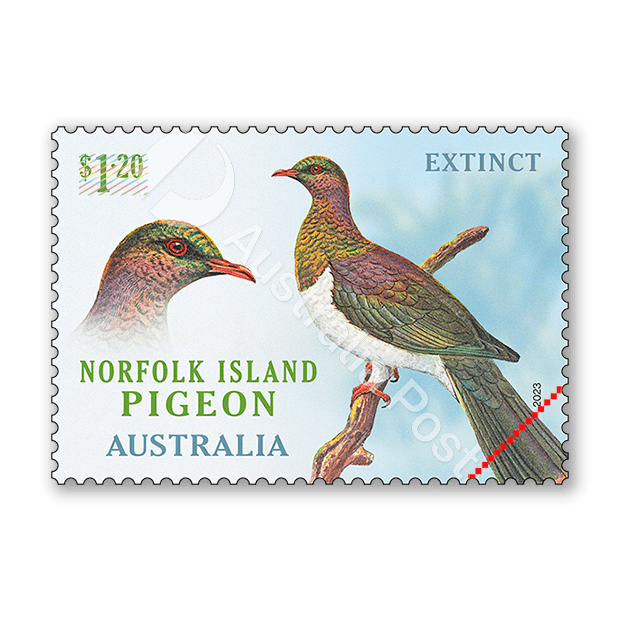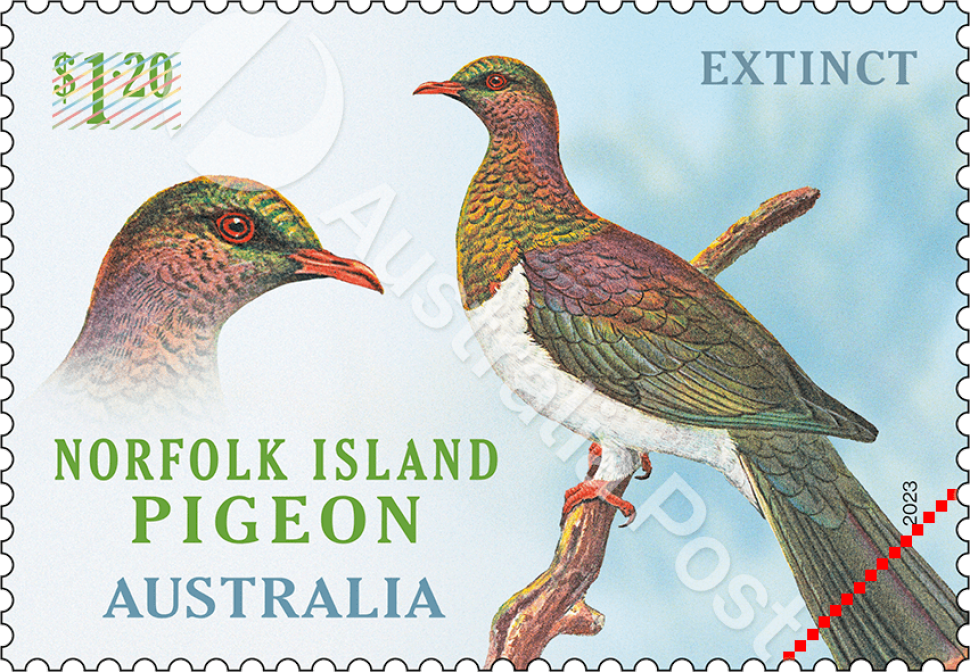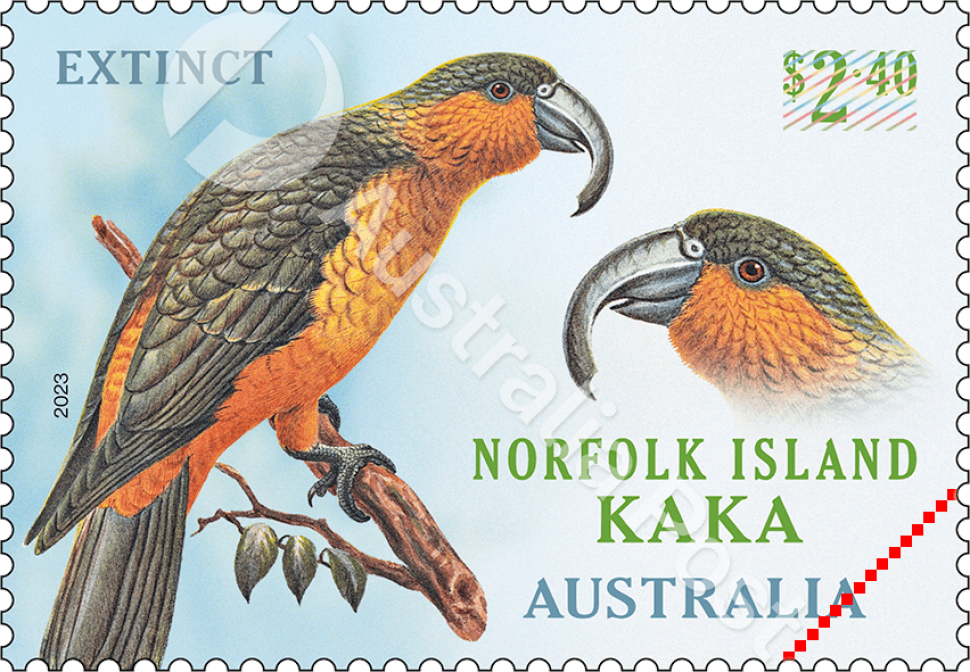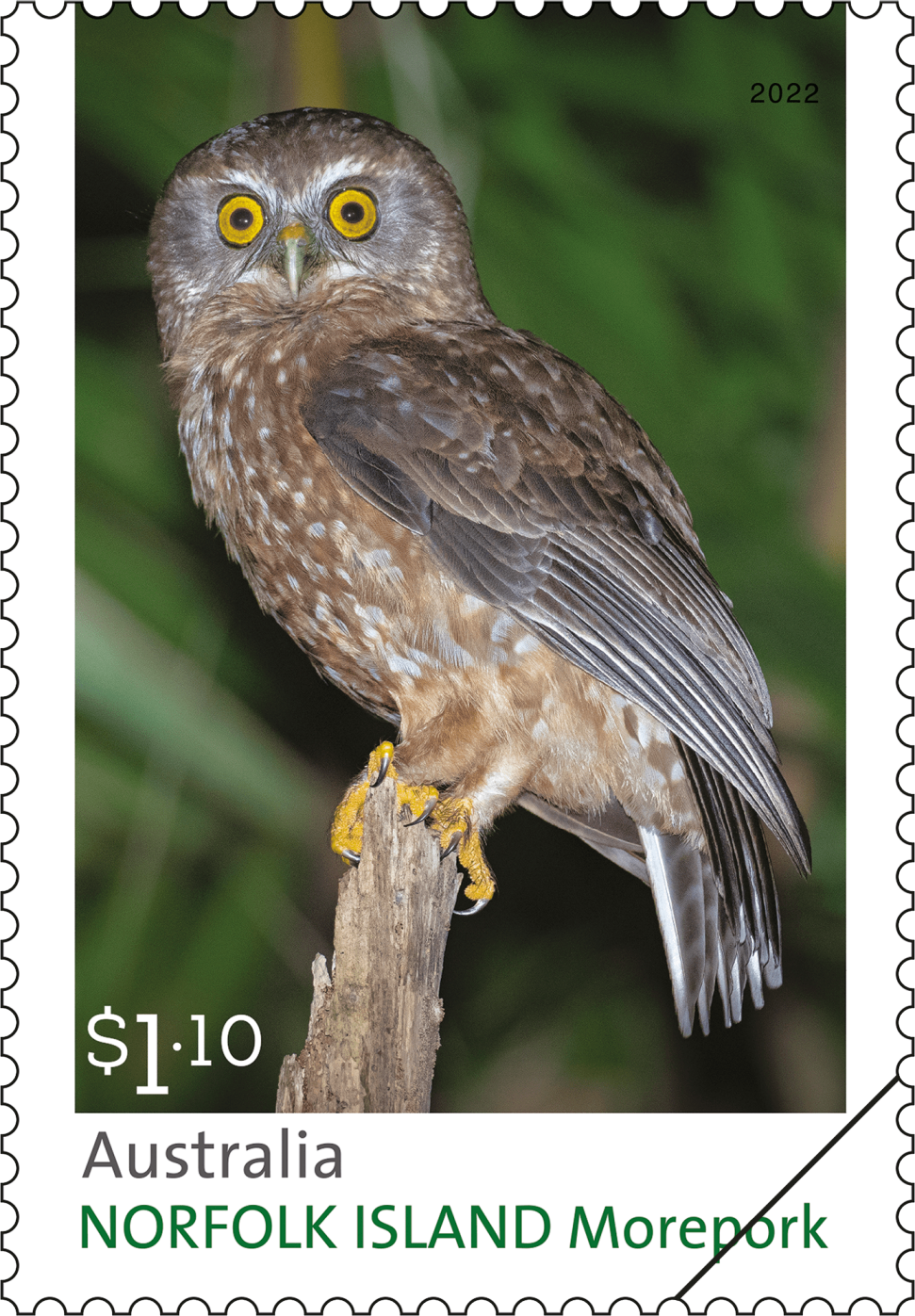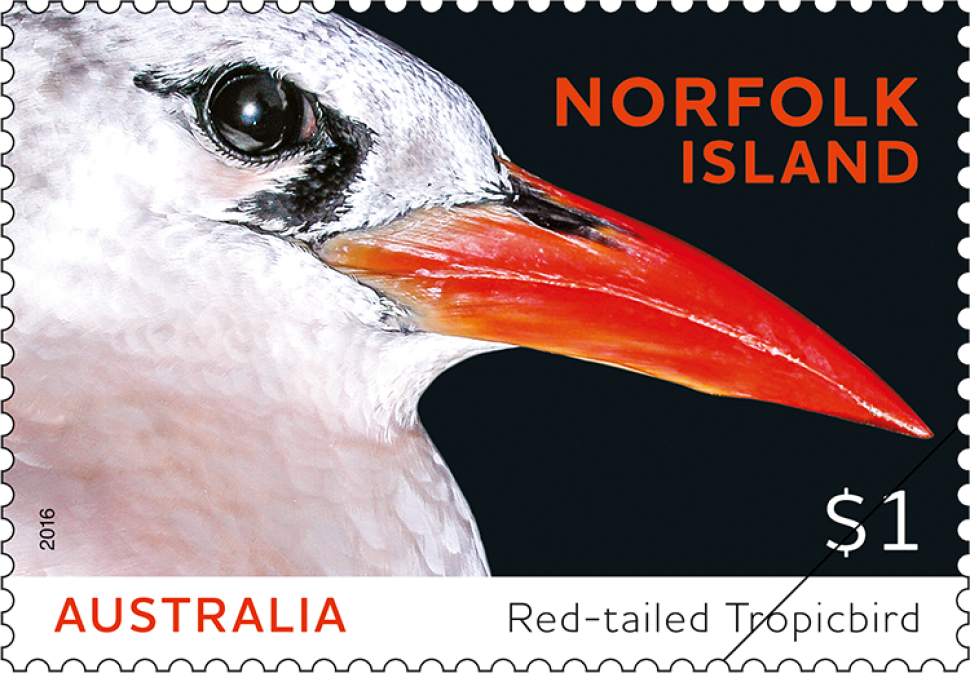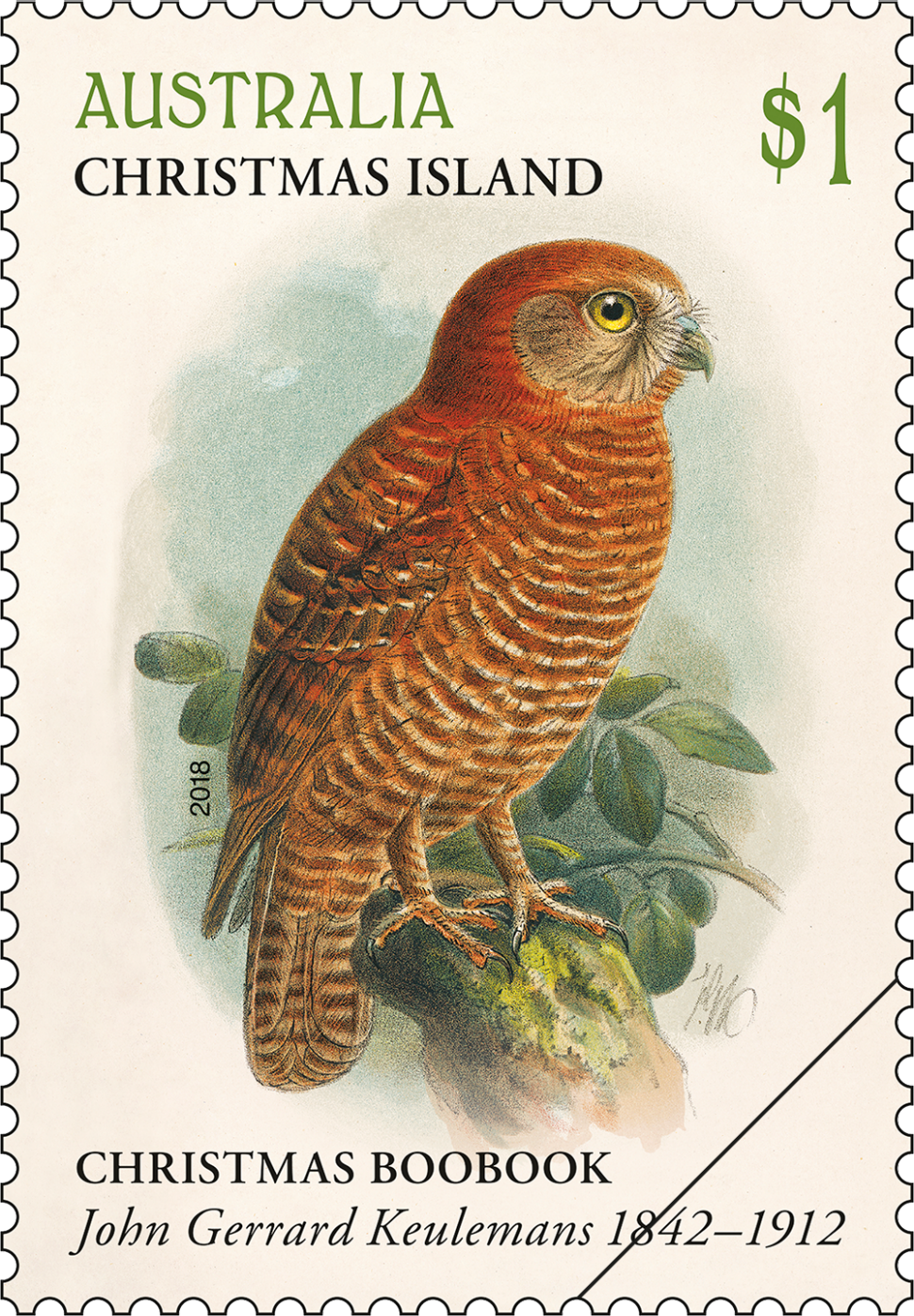Overview
A small island territory at the juncture of tropical and temperate environments, Norfolk Island, with its mild climate and isolated location, is significant for both vagrant and endemic faunal species.
Since European arrival in 1788, Norfolk Island has lost five endemic bird species and five subspecies. Australia has a regrettable record for species extinctions, and Norfolk and Lord Howe Islands both have a particularly poor record for avian extinctions. The key reasons for this are hunting (in earlier years), predation by introduced species, such as rats and cats, and forest clearance. All of these have a grave impact on species’ survival on a small landmass.
This stamp issue features two of the larger forest birds that once inhabited the South Pacific territory: the Norfolk Island Pigeon and Norfolk Island Kaka. The minisheet and first day cover feature two smaller birds no longer found in the territory: the Norfolk Island Thrush and the Norfolk Long-tailed Triller.
Technical specifications
- Issue date
- 31 January 2023
- Issue withdrawal date
- 1 September 2023
- Denomination
- $1.20 x 1, $2.40 x 1
- Stamp design
- Sharon Rodziewicz, Australia Post Design Studio
- Product design
- Sharon Rodziewicz, Australia Post Design Studio
- Paper: gummed
- Tullis Russell 104gsm Red Phos.
- Printer
- RA Printing
- Printing process
- Offset lithography
- Stamp size (mm)
- 37.5 x 26
- Minisheet size (mm)
- 135 x 80
- Perforations
- 13.86 x 14.6
- Sheet layout
- Module of 50 (no design)
- FDI Postmark
- Norfolk Island NSW 2899
- FDI withdrawal date
- 1 March 2023
$1.10 Norfolk Island Pigeon
The Norfolk Island Pigeon, Hemiphaga novaeseelandiae spadicea, was considered a subspecies of New Zealand’s native pigeon, the Kereru (H. novaeseelandiae). Distinctively large at around 50 centimetres in length, this brightly coloured and once common pigeon is thought to have become extinct around 1900. The most likely cause for its extinction is hunting, by both humans and feral cats.
The illustration of the pigeon is by Dutch-born artist John Gerrard Keulemans (1842–1912) and reproduced from LW Rothchild’s 1907 book, Extinct Birds. It was reproduced courtesy of State Library Victoria.
$2.20 Norfolk Island Kaka
Nestor productus was a large parrot of around 38 centimetres, known as the Norfolk Island Kaka. It was closely related to New Zealand’s native and extant Kaka (N. meridionalis). It occurred on both Norfolk Island and the adjacent Phillip Island and was last recorded in the wild during the early decades of the 19th century; the last known bird in captivity, held in London, survived until 1851. It is believed that habitat destruction through land clearing for agriculture and hunting by convicts in the early penal colony were responsible for the Kaka’s disappearance.
The illustration of the kaka is also by Keulemans and reproduced from LW Rothchild’s 1907 book. It was reproduced courtesy of State Library Victoria.
Shop our stamp collectables
Set of stamps:
Set of Lost Birds of Norfolk Island Gummed Stamps
This set of stamps contains all two stamps from the Lost Birds of Norfolk Island stamp issue.
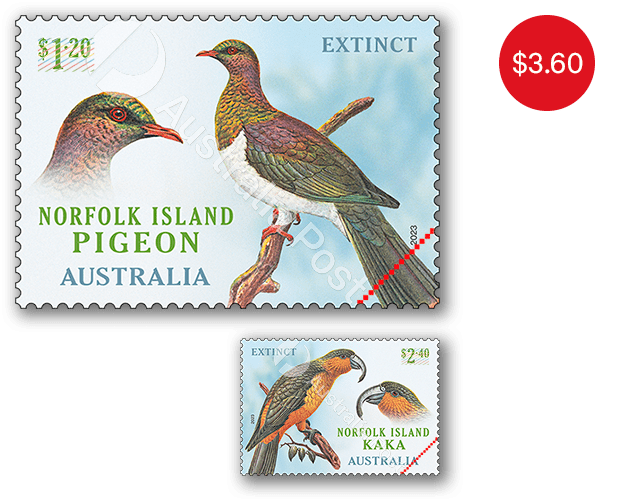
Minisheet:
Lost Birds of Norfolk Island Minisheet
The Lost Birds of Norfolk Island minisheet consists of the two stamps from the issue incorporated into a miniature stamp sheet.
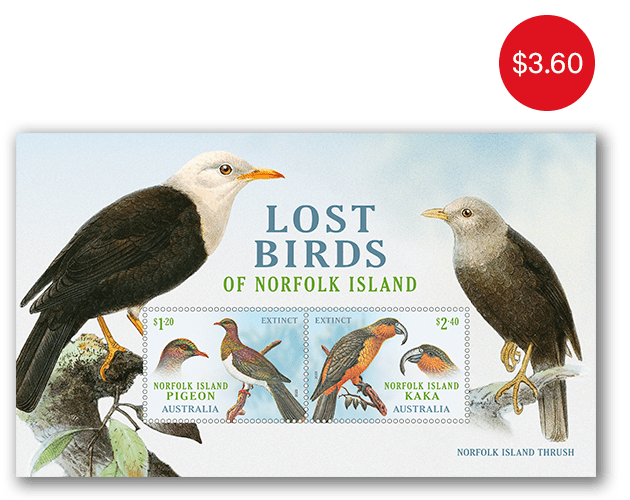
Gutter strip 10x $1.20:
Gutter Strip of 10x $1.20 Norfolk Island Pigeon Stamps
The gutter strip consists of 10 x $1.20 Norfolk Island Pigeon stamps from the Lost Birds of Norfolk Island stamp issue.
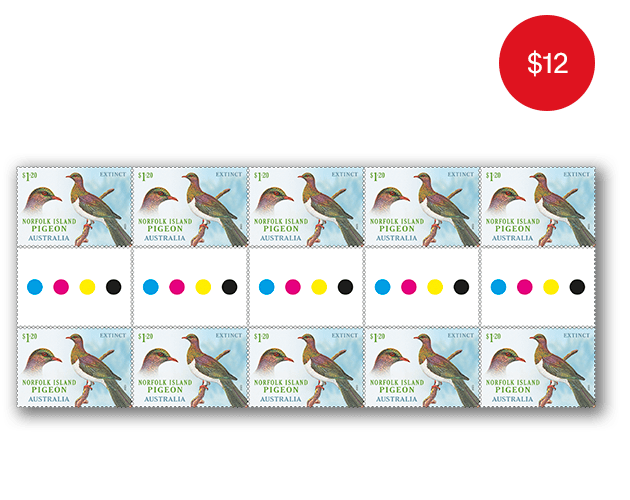
Gutter strip 10x $2.40:
Gutter Strip of 10x $2.40 Norfolk Island Kaka Stamps
The gutter strip consists of 10 x $2.40 Norfolk Island Kaka stamps from the Lost Birds of Norfolk Island stamp issue.
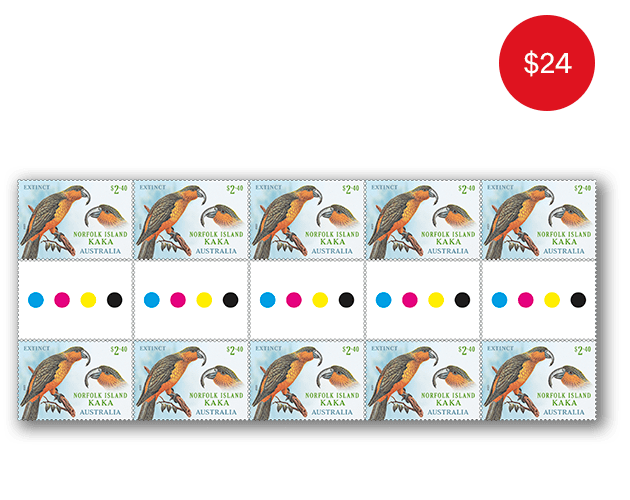
- Set of stamps
- Minisheet
- Gutter strip 10x $1.20
- Gutter strip 10x $2.40
Additional collectables:
- Lost Birds of Norfolk Island First Day Cover (Gummed Stamps)
- Lost Birds of Norfolk Island First Day Cover (Minisheet)
- Pictorial Envelope for the Lost Birds of Norfolk Island Stamp Issue
This content was produced at the time of the stamp issue release date and will not be updated.

